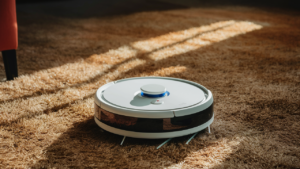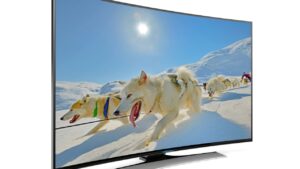Running your air conditioner efficiently can save energy and cut costs. It’s crucial for both comfort and the environment.
Recommended Best Home Air Conditioner 2025
| Recommendation | Product |
| Best Overall | LG 8,000 BTU Window Air Conditioner |
| Popular Choice | Dreo Portable Air Conditioners |
| Best Value | Midea Smart Inverter Air Conditioner |
| Best Budget | GE Window Air Conditioner Unit |
| Another Excellent Pick | Frigidaire 14,300 BTU Smart Window Air Conditioner |
As summer temperatures soar, keeping cool becomes essential. But, air conditioning can be costly and wasteful if not managed properly. By following some smart tips, you can ensure your air conditioner runs smoothly without draining your wallet or harming the planet.
In this blog, we’ll explore various ways to optimize your air conditioner’s performance, offering practical advice for energy conservation. These tips will help you maintain a cool home while being mindful of energy use. Get ready to transform how you cool your space, making it more efficient and eco-friendly. Let’s dive into these energy-saving strategies for your air conditioner!

Choosing The Right Ac Unit
Choosing the right air conditioner for your home can make a significant difference in your energy bills and comfort. An efficient AC unit not only cools your home effectively but also saves you money in the long run. Let’s explore some key aspects you should consider while selecting your next air conditioner.
Size Matters
One of the most critical factors is choosing the right size unit. An AC that is too small will struggle to cool your home, running constantly and wasting energy. On the other hand, a unit that is too large will cool the space too quickly, cycling on and off frequently, which can also waste energy and decrease comfort.
To find the right size, measure the square footage of the area you need to cool. Use a BTU (British Thermal Unit) calculator to determine the appropriate capacity for your space. For example, a 200-square-foot room typically requires a 6,000 BTU unit.
Energy Efficiency Ratings
Energy efficiency is another crucial consideration. Look for units with high SEER (Seasonal Energy Efficiency Ratio) ratings. The higher the SEER rating, the more efficient the unit, which translates to lower energy bills.
For instance, if you have a unit with a SEER rating of 18, it is more efficient than one with a SEER rating of 14. Energy Star-rated units are also a good choice as they meet strict energy efficiency guidelines set by the U.S. Environmental Protection Agency.
Think about the long-term savings. Though energy-efficient models might cost more upfront, the savings on your energy bills can make it a worthwhile investment. Plus, some utility companies offer rebates for purchasing energy-efficient appliances.
Are you considering replacing your old air conditioner? Take these tips into account to ensure you choose a unit that fits your needs and saves you money.
Optimal Temperature Settings
Understanding the optimal temperature settings for your home air conditioner can significantly reduce energy consumption. By setting your thermostat to the right temperature, you can maintain comfort while saving on utility bills. Let’s explore the recommended settings and how to adjust them for comfort.
Recommended Settings
Experts suggest setting your thermostat to 78°F (25°C) during summer. This temperature balances comfort and energy savings. At night or when you are away, increase the temperature by a few degrees. This reduces the workload on your air conditioner, saving energy.
Adjusting For Comfort
While 78°F (25°C) is ideal for energy savings, personal comfort matters too. If 78°F feels warm, lower the thermostat slightly. Find a temperature that feels comfortable without drastically increasing energy use. Use fans to help distribute cool air more effectively.
Remember, small adjustments can make a big difference. Try raising the temperature a degree or two and see if it remains comfortable. Every degree higher can save around 3-5% on cooling costs.
Maintenance Practices
Maintaining your air conditioner is key to running it efficiently and saving on energy costs. Simple maintenance practices can extend the life of your unit and keep it working at peak performance. Let’s dive into some practical tips that you can start implementing today.
Regular Cleaning
Regular cleaning of your air conditioner is essential. Dust and dirt can accumulate on the filters and coils, reducing the efficiency of your unit.
Make it a habit to clean or replace the filters every month during the cooling season. Dirty filters block airflow and make your AC work harder.
Don’t forget to clean the evaporator and condenser coils at least once a year. This helps to maintain proper heat absorption and release.
Keep the area around the outdoor unit free from debris and vegetation. This ensures good airflow and prevents the unit from overheating.
Professional Check-ups
While regular cleaning is something you can handle, professional check-ups are also crucial. Schedule an annual check-up with a certified technician.
During the check-up, the technician will inspect the unit for any potential issues. They will check the refrigerant levels, test for leaks, and ensure the thermostat is working correctly.
They will also inspect the electrical components and tighten any loose connections. This prevents breakdowns and ensures your unit operates safely.
Have you noticed any unusual noises or reduced cooling performance? These could be signs that your AC needs professional attention. Don’t wait for a complete breakdown before calling a technician.
Are you ready to take better care of your air conditioner? Start with these maintenance practices and enjoy a more efficient and longer-lasting unit.
Enhancing Airflow
Enhancing the airflow in your home can significantly boost the efficiency of your air conditioner. Proper circulation ensures that cool air spreads evenly, reducing the load on your AC. Let’s dive into some practical tips to enhance airflow, focusing on using fans and unblocking vents.
Using Fans
Fans are your air conditioner’s best friends. They help distribute the cool air more effectively. Consider placing fans strategically around your home.
Ceiling fans, for instance, push the cool air down. This can make rooms feel cooler, allowing you to set your thermostat a few degrees higher without sacrificing comfort.
Portable fans are also a great addition. They can be moved from room to room, ensuring that every corner of your home benefits from enhanced airflow. Have you ever tried placing a fan near your AC unit? It helps spread the cool air faster!
Unblocking Vents
Blocked vents can severely hinder your AC’s performance. Ensure that furniture, curtains, or other objects aren’t covering your vents. This allows air to flow freely and efficiently.
Regularly check and clean your vents. Dust and debris can accumulate, reducing airflow. A simple vacuum can often do the trick.
Consider the layout of your rooms. Are there any items that might be obstructing the airflow? Rearrange if necessary. Better airflow leads to a more efficient AC and a cooler home.
How often do you think about your home’s airflow? Implementing these tips can lead to noticeable improvements. You’ll not only feel cooler but might also see a drop in your energy bills. Try these tips and experience the difference!
Smart Thermostats
Smart thermostats are a modern solution for managing home temperature. They offer more than just convenience. These devices can help you save on energy bills. They adapt to your schedule and make automatic adjustments. This means you use your air conditioner more efficiently.
Benefits
Smart thermostats offer several advantages. They learn your habits and adjust settings accordingly. This keeps your home comfortable and saves energy. You can control them remotely using your smartphone. This allows you to make changes while away from home. Some models provide energy usage reports. These reports help you understand and manage consumption better. Over time, this can lead to noticeable savings on your energy bill.
Installation Tips
Installing a smart thermostat is straightforward. First, turn off the power to your HVAC system. This ensures safety during installation. Remove the old thermostat and label the wires. This makes it easier to connect them to the new device. Follow the manufacturer’s instructions carefully. Each model may have specific steps. Once installed, connect the thermostat to your Wi-Fi network. This enables remote control and other smart features. Finally, download the app on your smartphone. Follow the setup process to complete the installation.
Insulating Your Home
Proper insulation is key to running your air conditioner efficiently. It helps keep the cool air inside and the hot air outside. This reduces the workload on your AC and saves energy.
Let’s explore some effective ways to insulate your home.
Sealing Windows
Windows are common places where air can leak in or out. Sealing windows can make a big difference. Use weather stripping to seal gaps around windows. This keeps the cool air in and the hot air out. For extra protection, apply caulk to seal cracks in the window frames.
Adding Insulation
Adding insulation to your home can help maintain a steady temperature. Insulate your attic, walls, and floors. This reduces the amount of heat entering your home. Use materials like fiberglass or foam insulation. They are effective and easy to install. Good insulation reduces the need for constant air conditioning.
Using Curtains And Blinds
Using curtains and blinds can greatly improve the efficiency of your home air conditioner. They help control the amount of sunlight entering your home. This simple strategy can save you energy and money.
Blocking Sunlight
Close curtains and blinds during the hottest parts of the day. This prevents direct sunlight from heating your rooms. Use thick or dark-colored curtains for better results. They block more sunlight compared to light-colored ones. Blinds with reflective surfaces also help. They bounce sunlight back outside, reducing indoor heat.
Keeping Cool
Open curtains and blinds during cooler parts of the day. This allows natural light without the heat. Early mornings and late evenings are best. Adjust blinds to let in light but keep out direct sun. This keeps your home bright and cool. Use ceiling fans to circulate the cooler air. This reduces the workload on your air conditioner.
Energy-saving Habits
Optimize your air conditioner by setting the thermostat to a comfortable temperature. Regularly clean filters to ensure efficient airflow. Use ceiling fans to help circulate cool air.
## Energy-Saving Habits
Learning energy-saving habits can make a big difference in your electricity bill and reduce your carbon footprint. Simple changes in how you use your air conditioner can lead to significant savings. Here are a few practical tips to get you started:
### Turning Off When Not in Use
One of the easiest ways to save energy is by turning off your air conditioner when it’s not needed.
Imagine leaving the house for work or errands. Turning off the AC during these times can save a lot of energy. It might seem like a hassle, but the savings add up over time.
Think about it: Why cool an empty home?
You could also get into the habit of switching off the AC at night when the temperature drops. Open your windows to let in the cool night air instead.
### Using Timers
Timers are a fantastic way to manage your air conditioner’s energy usage.
Set the timer to switch off the AC just after you fall asleep or turn it on an hour before you get home. This way, you won’t have to remember to do it manually, and your home will be comfortable when you need it to be.
Many modern air conditioners come with built-in timers. If yours doesn’t, you can buy an external timer that plugs into the wall.
Using a timer ensures your AC runs only when necessary, saving energy and money.
What other small changes can you make to improve energy efficiency at home?
By adopting these energy-saving habits, you can run your air conditioner more efficiently. This translates to lower energy bills and a reduced environmental impact.
Alternative Cooling Methods
Keeping your home cool during summer can be challenging. Running your air conditioner non-stop can be costly. Consider alternative cooling methods. They help save energy and reduce your bills. Let’s explore some efficient ways to keep your home cool.
Natural Ventilation
Natural ventilation is a simple and cost-free method. Open windows and doors to create a breeze. This allows fresh air to circulate. Use fans to direct the flow of air. Position them to push hot air out. This method works best in the early morning and late evening. During these times, the air is cooler. Close windows and doors during the hottest part of the day. This keeps the cool air inside.
Evaporative Coolers
Evaporative coolers are another great option. They use water to cool the air. These coolers are energy-efficient and eco-friendly. They work best in dry climates. The process is simple. Water evaporates, lowering the air temperature. Place the cooler in a well-ventilated area. This ensures maximum efficiency. Regular maintenance is important. Clean the unit and change the water often. This prevents mold and keeps the air fresh.
Frequently Asked Questions
Is It Cheaper To Run Ac All Day Or Turn It Off?
It is cheaper to turn off the AC when not needed. Running it all day increases energy costs significantly.
How Can I Make My Air Conditioner Use Less Electricity?
Set your thermostat to 78°F. Clean or replace filters regularly. Use fans to circulate air. Close blinds to block sunlight. Seal any leaks in windows or doors.
Does Keeping The Ac At 72 Save Money?
Yes, setting your AC at 72 degrees can save money. It balances comfort and energy efficiency, lowering utility bills.
What Is The Most Economical Way To Run An Air Conditioner?
Use a programmable thermostat, set it to 78°F, and ensure regular maintenance. Seal windows and doors to prevent leaks. Use ceiling fans to circulate cool air.
Conclusion
Saving energy while running your air conditioner is simple. Follow these tips to stay cool and save money. Regular maintenance ensures efficiency. Use a programmable thermostat for better control. Keep doors and windows closed. Seal leaks and insulate well. Use ceiling fans to distribute cool air.
Set your thermostat to a higher temperature when not home. Shade your home from direct sunlight. These steps help maintain comfort and reduce energy bills. Small changes make a big difference in efficiency. Start implementing these tips today for a cooler, cost-effective home.






